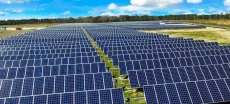On Thursday, a strong 6.9-magnitude earthquake struck southern Japan, triggering a tsunami alert for coastal areas on the islands of Kyushu and Shikoku, including Miyazaki and Kochi regions.
Details of the Earthquake:
- Magnitude: 6.9
- Epicenter: Less than 20 miles from the coast of Miyazaki, according to the US Geological Survey
- Alert Issued: Tsunami alert for affected coastal areas
- Response: Japan Meteorological Agency issued a stern warning for the region
- Casualties/Injuries: No updates reported yet by Japan’s State broadcaster
Read More: China has launched the world’s largest earthquake early warning network
Geological Context:
Japan’s susceptibility to earthquakes is due to its location along the Pacific Ring of Fire, where several major tectonic plates converge. Key factors contributing to Japan’s high seismic risk include:
- Subduction Zones: Where one tectonic plate is forced beneath another
- Numerous Fault Lines: Geological fractures where earthquakes frequently occur
- Volcanic Activity: The presence of active volcanoes due to tectonic movements
Japan is one of the most seismically active regions globally due to these geological conditions.











